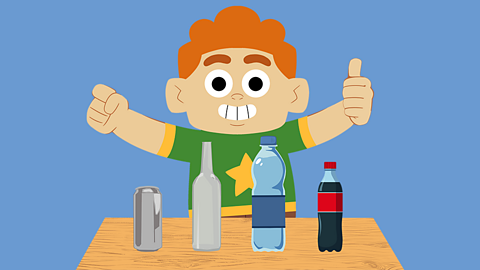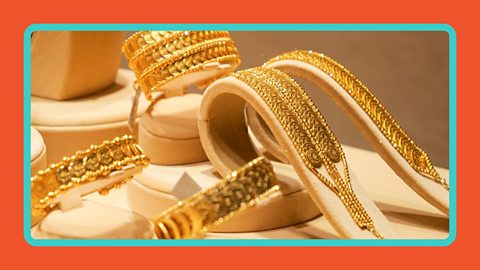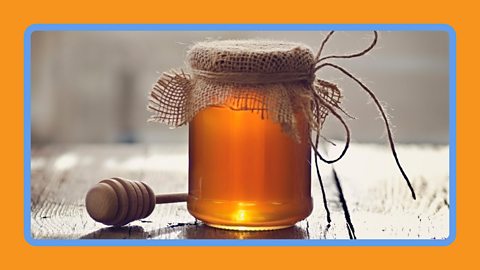
Describing materials
Different materials have different properties.
Properties help us to describe what a material is like.
For example, glass is hard and transparent but very fragile.
When we choose a material, we need to select the right one for the job. Knowing the properties of a material helps us to do that

Watch – Choosing the right material
Anna: Objects are made from different materials, and they're not all the same. Materials can be soft, hard, and even shiny. This is what we call a physical property of a material. Properties are the way materials look, feel, and behave. Materials’ properties can change when we heat them. For example, this clay is soft and stretchy and we can shape it into cups and bowls.
But after it's been put in a kiln, a type of oven, and heated up, it becomes brittle and hard. This is a ring. It's made from a type of metal called gold, and it's shiny. Some metals can be easily turned into many different shapes. You can't easily do that with rock. That's why objects are made from different materials.
You wouldn't make an umbrella from stone because it's too heavy, but you could make it from plastic because it's lightweight, easy to shape and waterproof. Wood is usually strong. It can bend, and many types can even float.
Glass is waterproof. It's often cold to the touch, and it's usually transparent. Together, we're going to look at these materials and sort them. Which one would be the best material to make a waterproof jacket from? This is cotton wool. It's lightweight but can't be cut into the shape of a jacket and it isn't waterproof. This is paper.
It's also lightweight, and it can be cut into the shape of a jacket, but it's also not waterproof. Here is a type of plastic. It's lightweight, it can be cut into shapes and is waterproof. It's a great material to make a waterproof jacket from. That's better. Now I've got a nice waterproof coat. So, what do you think? What would you make a wheelbarrow from metal,
plastic, glass or wood?
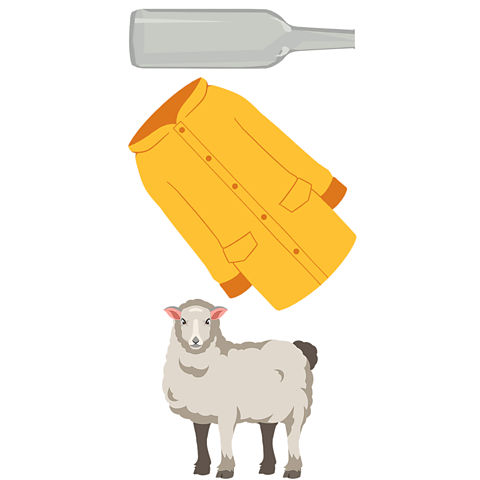
Fascinating facts
Most metals are solid and strong but some metals like mercury are liquid and very fragile.
Glass is made from sand heated up to high temperatures.
Plastic is almost always waterproof.
Cricket bats are traditionally made from the wood of the willow tree. Cricket balls are made from cork, leather and string.
Cotton has been used for clothes for over 7000 years.
Britain is one of the largest wool producers in the world, producing nearly 70,000 tonnes every year.
Glass windows were first used by the Romans in 100 AD.
Most wooden objects around us aren't flexible and cannot be bent, but wood can actually be a flexible material - just look at trees branches bending in the wind.

The properties of different materials
Properties help us describe materials.
We can group materials together based on their properties.
For example, some materials let electricity flow through them, we call these conductors, whereas materials that don't let electricity flow through them are called insulators.
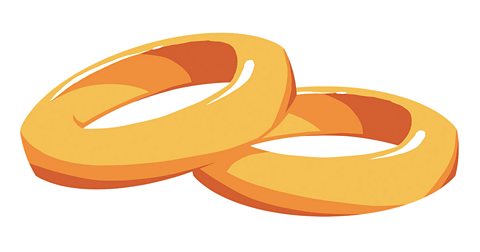
Metals
Where it comes from: Mined from underground.
Where we use it: Coins, jewellery, cans and cars.
Properties of different metals:
- Strong or soft
- Solid or liquid
- Shiny or dull
- Malleable
Different metals have different properties, some metals are conductors of heat and electricity and some are magnetic.

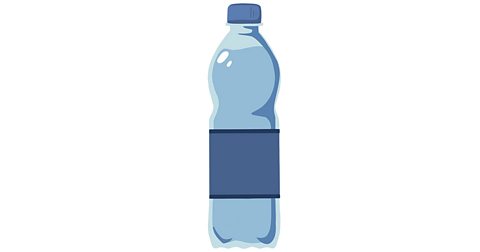
Plastics
Where it comes from: Man-made chemicals.
Where we use it: plastic bottles, umbrellas, food wrappers, cling film and toys.
Properties:
- Strong
- Waterproof
Plastics can be made into any shape by using heat.
They are good insulators and don't conduct heat or electricity.

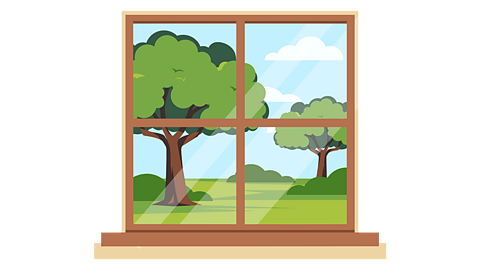
Glass
Where it comes from: Melting sand and other minerals together at very high temperatures.
Where we use it: windows, jars, marbles, glasses and lenses.
Properties:
- Transparent
- Hard
- Fragile
It is normally transparent and can be made into different shapes. Thick glass can be strong, but thin glass can be fragile.

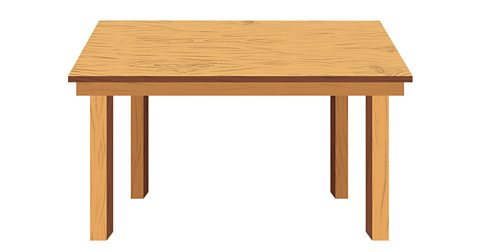
Wood
Where it comes from: Trees.
Where we use it: furniture, firewood, timber, cricket bats and picture frames.
Properties:
- Strong
- Long-lasting
It is an insulator of heat and electricity.


Fabric
Where it comes from: Plants, animals or man-made fibres woven together.
Where we use it: clothes, bedding, parachutes, soft toys and towels.
Properties:
- Flexible
- Warm
- Long-lasting
Different fabrics have different properties, they can be flexible, insulating, absorbent, warm and long-lasting.

Describing materials
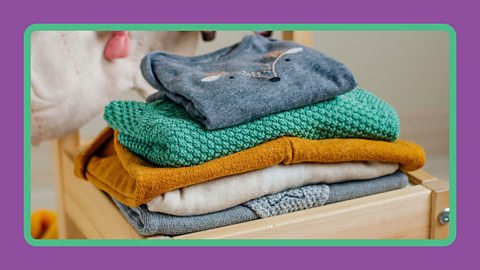
Image caption, Fabric
Clothes are made from fabrics, such as cotton or wool, because they are soft and warm.
1 of 4
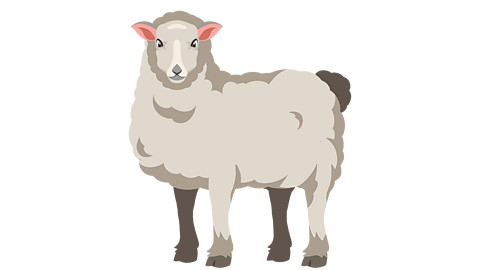
Did you know?
We get wool from sheep.
Wool is warm, hard-wearing and absorbent, making it perfect for the jumpers, scarves and hats we use to keep us warm when it is cold outside.

Important words
Conductor – A material that lets electricity flow through it.
Fragile – Something that is easily breakable.
Insulator – A material that doesn't let electricity flow through it.
Magnetic – Able to attract other materials made of metal.
Malleable – Capable of being hammered or pressed into a new shape without being likely to break or return to the original shape.
Materials – The things that objects are made from.
Properties – The strengths and weaknesses of something.
Strengths – The ways in which a material is useful.
Transparent – Clear and see-through.
Weaknesses – The ways in which a material isn't useful.
Activities
Test yourself on materials with the activities below.
Activity 1 – Quiz
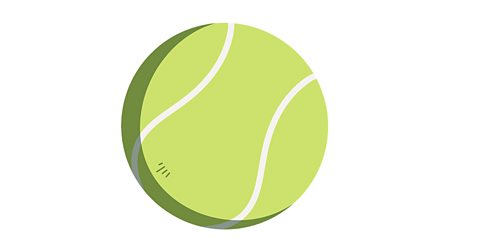
Activity 2 – I spy…
It's time to play I spy with objects and materials.
With a friend, or an adult you know, find an object and say the materials that it is made from. Then see if they can guess the object.
For example, if you've seen a tennis ball, you might say "I spy with my little eye, something made from rubber and fabric".

Activity 3 – Sort the materials
Easter Holidays Activity Pack activity
Check out some Easter inspired activities to complete in the Easter Holidays, for KS1.

More on Everyday materials
Find out more by working through a topic
- count1 of 2
